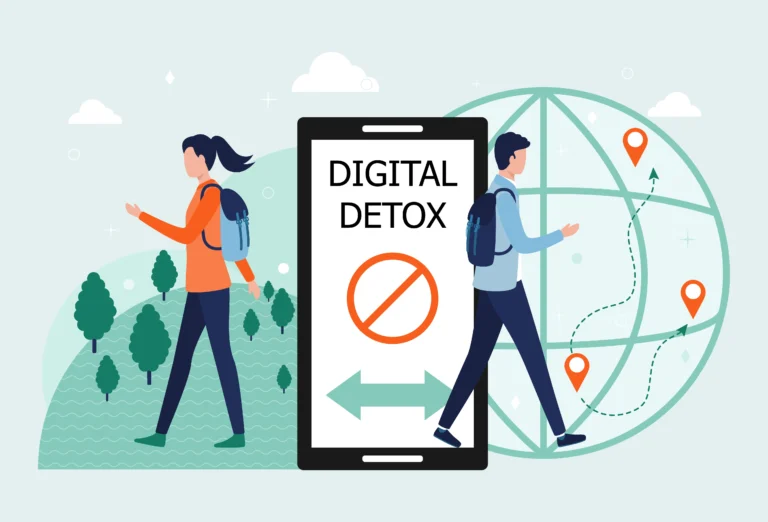Sustainable Tech Solutions for Eco-Conscious Businesses in 2024: Making a Green Impact
In 2024, eco-conscious firms are increasingly embracing sustainable digital solutions to lessen their environmental effect. As climate change worries mount, firms are feeling the pressure—and realizing the benefits—of adopting greener practices. Using green technology solutions, such as eco-friendly packaging and sustainable web hosting, can lower an organization’s carbon footprint, draw in eco-conscious customers, and result in long-term cost benefits. For companies looking to become green, here is a thorough look at the best sustainable tech options.

1. Green Web Hosting: Powering the Internet Sustainably
Although the internet contributes roughly 3.7% of global greenhouse gas emissions, its carbon footprint is sometimes overestimated. One essential way to lessen the digital carbon footprint is through green web hosting.
- What is Green Web Hosting?
Hosting companies that power their data centers with renewable energy sources or offset their carbon emissions are referred to as green web hosts. To balance their energy use, these providers usually buy Renewable Energy Certificates (RECs) or make investments in hydroelectric, solar, or wind power. - Benefits for Businesses
- Savings: Because renewable energy has long-term economic advantages, green hosting companies frequently provide reasonable prices.
- Improved Brand Reputation: Linking your company to sustainable practices increases brand loyalty and appeal as consumers become more environmentally conscious.
- Scalability: A lot of green hosting companies provide scalable solutions that let companies grow their online presence without having an adverse effect on the environment.
- Top Green Web Hosting Providers
- GreenGeeks: Runs on 300% renewable energy, giving fast, secure, and eco-friendly web hosting.
- DreamHost: Devoted to carbon-neutral operations and the use of energy-efficient, renewable-resource-powered data centers.
- A2 Hosting: Supports a number of environmental projects and collaborates with Carbonfund.org to offset its emissions.
2. Eco-Friendly Packaging Solutions: Reducing Waste
One of the main causes of trash in the environment is packaging. Nonetheless, the IT sector is spearheading advancements in environmentally friendly packaging, enabling companies to make sustainable decisions without compromising use.
- Types of Eco-Friendly Packaging
- Biodegradable Materials: Plant-based packaging produced from cornstarch, mushrooms, or algae is an example of a material that decomposes organically over time.
- Recycled & Recyclable Packaging: To assist close the waste loop, a lot of packaging options available today are made entirely of recyclable materials and recycled materials.
- Minimalist packing: A company’s carbon footprint can be greatly reduced by completely cutting back on packing, for example, by using smaller designs or getting rid of extra filler.
- Advantages for Eco-Conscious Brands
- Reduced Shipping Costs: Packaging options that are lightweight and simple can lower shipping costs.
- Improved Customer Experience: Brand loyalty can be increased by environmentally conscious consumers expecting sustainable packaging.
- Regulatory Compliance: As environmental regulations become more stringent, eco-friendly packaging helps businesses stay in compliance and stay out of trouble.
- Notable Eco-Friendly Packaging Providers
- EcoEnclose: Provides e-commerce brands with mailers, boxes, and poly bags that are 100% recycled and biodegradable.
- Pratt Industries:Specializes in using recycled paper to create environmentally friendly corrugated packaging.
- Noissue: Offers recyclable, compostable, or biodegradable custom packaging alternatives.
3. Sustainable E-commerce Practices: Greening the Online Shopping Experience
Environmentally concerned companies can implement a number of tech-driven strategies to make their online retail operations more sustainable. E-commerce is expanding quickly, and with it, the environmental effect of production, packaging, and delivery.

- Sustainable E-commerce Strategies
- Carbon-Neutral Shipping: Purchase carbon credits to make up for the emissions caused by shipping. Carbon-neutral shipping solutions are now available from many carriers, including FedEx and UPS.
- Green Product Filters: Let consumers sort products based on sustainability standards including recyclable packaging, ethical manufacture, and eco-friendly ingredients.
- Effective Supply Chain Management: Implement technological solutions that minimize manufacturing and shipping waste and maximize inventory.
- Key Benefits for E-commerce Businesses
- Operational Cost Reduction: Over time, cost reduction can be achieved through operational efficiencies that are frequently brought about by sustainable practices.
- Customer Loyalty: Brands that exhibit a dedication to sustainability are more likely to be supported by environmentally conscious consumers.
- Reduced Returns: One way to cut down on returns is to provide clear product information, including the impact on the environment.
- Tech Solutions for Sustainable E-commerce
- CarbonClick: A tool that gives customers a say in sustainable practices by allowing them to offset their carbon footprint at checkout.
- Shopify’s Planet App: Enables businesses to offset their shipping emissions, enhancing their green credentials.
- Loop Returns: Focuses on reducing returns by making exchanges simple and reselling returned items to avoid waste.
4. Renewable Energy and Smart Office Solutions
Intelligent technologies that optimize energy use and the deployment of renewable energy can help tech-driven offices drastically lessen their environmental effect.
- Renewable Energy for Businesses
- Solar Panels: One workable long-term way to lessen reliance on nonrenewable resources is to install solar panels on company property.
- Wind and Hydroelectric Power: Companies that specialize in wind or hydroelectric power can also buy energy from these suppliers.
- Energy Storage Solutions: Businesses can control electricity usage during peak hours by storing renewable energy in batteries.
- Smart Office Technologies
- IoT Devices for Energy Monitoring: These gadgets track how much energy is used in various buildings and provide information that enables businesses to lower usage.
- Smart HVAC and Lighting Systems: Automated systems can significantly lower energy use by adjusting temperature and lighting according to occupancy and time of day.
5. Circular Economy Practices: Reusing and Recycling Resources
Businesses can cut waste and manufacturing costs by adopting a circular economy, which reuses, recycles, and keeps resources in circulation for as long as possible.
- Examples of Circular Economy Tech Solutions
- Product-as-a-Service (PaaS): Businesses can lease or rent things rather than sell them, prolonging their lives and cutting down on waste.
- Waste-to-Resource Technologies: Some businesses are turning waste items into new materials or sources of energy by using technology.
- Programs for Product Repair and Refurbishment: Giving consumers the choice to fix or upgrade items can reduce disposal rates and increase brand loyalty.
6. Employee Education and Green Culture Initiatives
Encouraging a green culture and teaching staff eco-friendly behaviors are crucial to optimizing impact; implementing sustainable tech solutions is just one part of the jigsaw.
- Green Training Programs: Provide sustainability-related training sessions or materials to enable staff members to make decisions that are environmentally friendly.
- Gamification of Green Initiatives: Provide incentives or recognition for sustainability initiatives to promote environmentally friendly behavior in the workplace.
- Flexible Remote Work: Enabling workers to work from home can cut down on a company’s overall energy consumption and emissions from transportation.
7. Digital Product Development and Virtualization
By digitizing goods and services, companies can drastically cut down on the amount of physical resources they use thanks to the growth of cloud computing and digital-first policies.
- Product Virtualization: Instead of creating tangible things, some businesses are switching to digital alternatives, such as e-books, online courses, and virtual events, which do away with the need for production, shipping, and raw materials.
- Cloud-Based Solutions: Companies can cut down on the demand for on-premises servers, which lowers energy usage and hardware waste, by shifting software and storage requirements to cloud platforms. Seek out cloud service companies that make investments in renewable energy, such as AWS, Microsoft Azure, and Google Cloud.
- Paperless Operations: By utilizing digital document management and collaboration platforms like as Adobe Sign, DocuSign, and Slack to establish a paperless workplace, paper waste is reduced, which lowers expenses and has a positive environmental impact.
8. Water Conservation Technologies
Businesses may contribute to water conservation by implementing intelligent water management systems. Water scarcity is a pressing environmental issue.

- Smart Water Meters: Businesses may monitor water consumption in real time, spot regions of excessive use, and fix possible leaks early by installing IoT-enabled water meters. Businesses can reduce water waste by using this data to inform their decisions.
- Water Recycling Systems: To help lower overall water consumption, sophisticated water recycling systems gather, filter, and repurpose wastewater for non-potable uses like irrigation or cooling systems.
- Sustainable Sanitation Options: Greywater recycling systems, waterless urinals, and low-flow fixtures are environmentally friendly choices that reduce water usage without sacrificing effectiveness or cleanliness.
9. Sustainable Data Centers and Edge Computing
One of the biggest users of electricity in the tech sector is data centers, and using sustainable data processing and storage methods can significantly lessen the impact on the environment.
- Energy-Efficient Data Centers: Seek out data centers that have clever energy management, renewable energy sources, and cutting-edge cooling systems. To reduce their carbon impact, several big firms are building incredibly eco-friendly and efficient data centers.
- Edge Computing: By processing data closer to its source, edge computing eliminates the need for long-distance transmission. By lowering latency and bandwidth needs, especially for IoT and AI applications, this saves energy.
- Liquid Cooling Systems: An emerging strategy that significantly increases energy efficiency by lowering cooling costs and energy consumption is the replacement of conventional air-cooled data centers with liquid cooling systems.
10. Sustainable Sourcing and Ethical Supply Chains
Sustainable sourcing guarantees that resources are sourced in a way that supports moral labor practices and has the least possible negative impact on the environment.
- Supply Chain Transparency: Track the origin and path of materials using blockchain technology and other transparency tools. This makes it possible for companies to make sure their suppliers adhere to ethical and sustainable standards, which supports just labor practices and lessens environmental damage.
- Ethical Collaborations: Make sure that sustainability initiatives are implemented across the supply chain by collaborating with vendors and suppliers who place a high priority on environmentally friendly practices, such as using renewable resources and sustainable production techniques.
- Green Certifications: To identify environmentally conscious purchasing methods, look for suppliers who have earned certification from reputable green standards such as Fair Trade, FSC (Forest Stewardship Council), and Cradle to Cradle.
Conclusion
Businesses can use sustainable tech solutions to promote innovation, reduce expenses, and increase customer loyalty in addition to fulfilling their environmental responsibilities. Businesses can have a big impact through eco-friendly packaging, green web hosting, and circular economy initiatives. Businesses can set the standard for a more sustainable future by implementing these technologies, drawing in eco-aware clients and aiding in the worldwide endeavor to slow down climate change. As 2024 approaches, implementing these green practices will not only be advantageous but also necessary for progressive companies.







